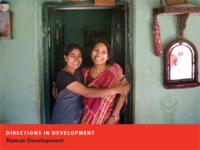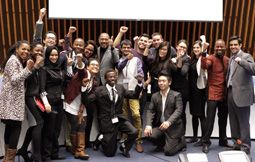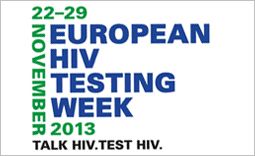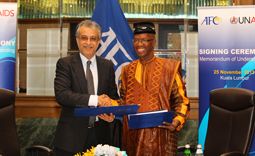
Feature Story
Communities in South Asia show how stigma and discrimination can be transformed
22 июля 2010
22 июля 2010 22 июля 2010 Credit: World Bank
Credit: World BankStigma and discrimination are widely recognised as two of the major barriers to an effective and successful AIDS response. But how, with both often entrenched and hard to challenge, can they be meaningfully addressed? The World Bank and The International Center for Research on Women (ICRW) focused on this central question during a satellite session at the XVIII International AIDS Conference in Vienna entitled: Making the case for stigma-reduction and moving to action, the experience of South Asia.
Stigma reduction
The session made the case for stigma reduction as a critical strategy for effective HIV prevention and treatment programmes, with a range of speakers sharing the latest evidence on why investing in stigma-reduction is critical for effective HIV programming.
The results from the South Asia Region Development Marketplace, (SARDM) were a key focus. Spearheaded by the World Bank in 2008, this competitive grants programme identified and supported small scale, community-driven, projects demonstrating a creative approach to reducing stigma and discrimination. An innovative range of interventions included beauty pageants, traditional folk art and a restaurant run by sex workers. There is also a theatre programme designed to change attitudes that make it harder for men who have sex with men to access legal redress; a project challenging internalised stigma among injection drug users, helping them get back on their feet economically and socially, and a radio programme produced by journalists living with HIV featuring positive role models.
Experiences of what works for successful community-based stigma reduction were shared by a number of the implementers.
“These remarkable programmes have now touched the lives of 100,000 people across South Asia,” said Mr Michal Rutkowski, the World Bank’s Director for Human Development in South Asia.
“The results have been very impressive. We have learned about tried and true ideas that really work. Our hope is that we can persuade government and community leaders and others to take these on-board and expand them and take them nationwide.”
The satellite session provided an opportunity to launch a new global network for action on stigma and discrimination and the World Bank report detailing the full extent of the SARDM programme with its successes and challenges.
Writing in the introduction to the publication, UNAIDS Executive Director, Mr Michel Sidibé, pointed out the significance of community empowerment. “When communities assume leadership of their own programmes, they become equitable and sustainable. It breaks the cycle of stigma and discrimination. It restores their dignity and rights to good health and development.”
Right Hand Content
Cosponsors:
Partners:
International Center for Research on Women (ICRW)
Feature stories:
World Bank highlights potential risks of AIDS to economic and social development in South Asia (05 March 2010)
Publications:
UNAIDS Outlook Report 2010 (pdf, 6 Mb)
UNAIDS Outcome Framework 2009-2011 (pdf, 388 Kb)
The World Bank: Tackling HIV-related stigma and discrimination in South Asia
HIV and AIDS in South Asia: An Economic Development Risk
Related
 Walk in my shoes — UNAIDS Board devotes key session to HIV, adolescents and youth
Walk in my shoes — UNAIDS Board devotes key session to HIV, adolescents and youth

20 декабря 2013 года.
 Know your HIV status: First European testing week takes off
Know your HIV status: First European testing week takes off

27 ноября 2013 года.
 Asian Football Confederation and UNAIDS team-up to raise awareness of HIV
Asian Football Confederation and UNAIDS team-up to raise awareness of HIV

26 ноября 2013 года.


